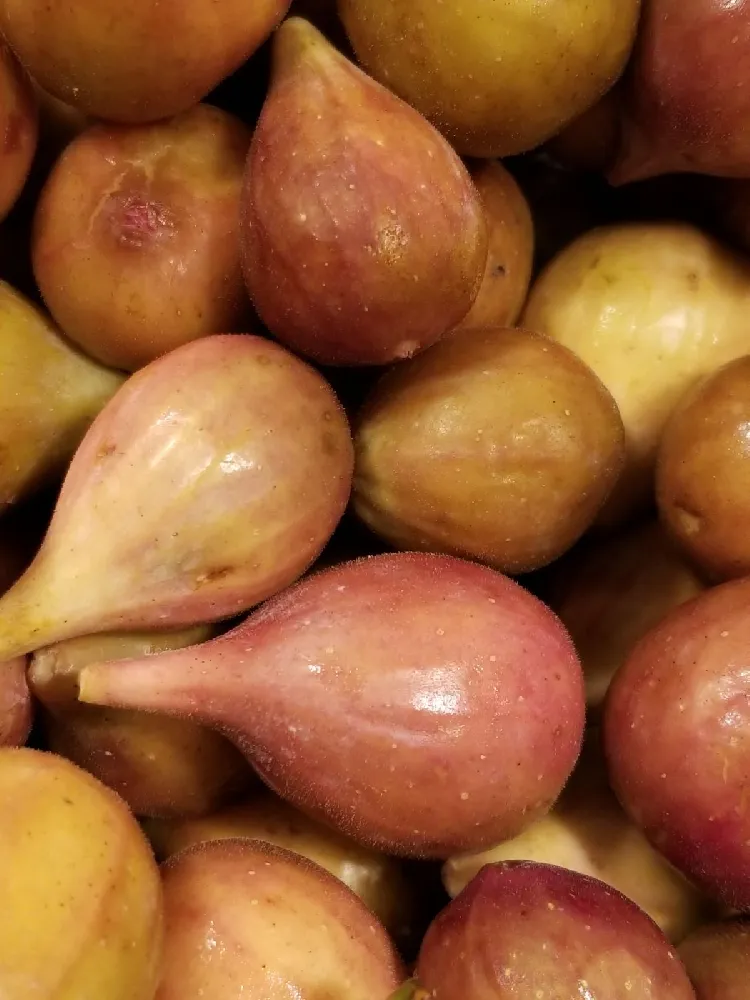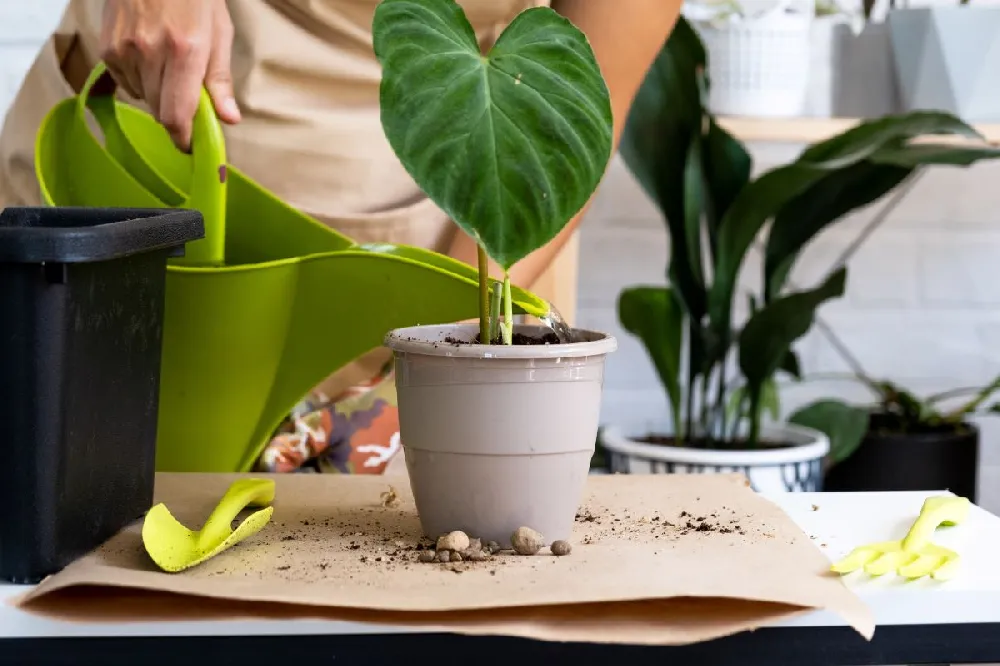- Home >
- Edible Plants >
- Jackfruit Tree
Jackfruit Tree for Sale - Buying & Growing Guide
For those searching for a tree that has a tropical look and plentiful fruits, the jackfruit tree is what you need. This plant, known botanically as Artocarpus heterophyllus, bears large fruits that have a bright green color, a recognizable spiky texture, and a surprisingly savory flavor. These plants are also an ideal option if you want to cultivate a garden with a tropical theme, as the leaves and growth habit of this heat-loving species are both quite attractive.
- Large fruits with a unique shape and eye-catching outer texture.
- Straight trunk and spreading branches make for a neat and attractive growth habit.
- Long leaves are ideal for creating a tropical look in your yard.
Enter your zip code to find nearby stores that may carry this plant.
Plant Care
Sunlight

This plant prefers a growing location that is warm and has full sun exposure.
Watering
Water regularly to prevent the soil from becoming dry while also avoiding overwatering.
Fertilizing

Fertilize about once or twice per year with a mix that has a high nitrogen ratio.
Planting and Care
Planting instructions
If you have a jackfruit tree sapling, you can plant it as you would with any other woody plant. Find a location that meets the heat and sunlight needs of this species, and prepare a planting hole that is twice as wide as the root ball. At times, you may need to amend your planting area with an organic material such as compost prior to planting to improve the overall soil structure for better drainage.
Watering and nutrients
Newly planted jackfruit trees may require water every day for the first few months of establishment. After the tree has adapted to its growing location, you can continue watering it regularly. What’s most important is monitoring the soil moisture content, which should never be too high or too low. Be sure to loosen and amend your soil as needed to ensure it drains well enough. You can fertilize these plants around once every six months with a general-purpose fertilizer to enhance their growth.
Pollination
A single jackfruit tree will bloom with both male and female flowers and be able to self-pollinate. Typically, these plants make use of wind currents and several insect species to conduct their pollination process. If you wish to have a jackfruit tree harvest that consists of the greatest quality and quantity of fruit, plant multiple trees near one another. Cross-pollination of jackfruit trees consistently produces better harvest results compared to jackfruit trees that grow individually.
Pruning
Gardeners often prune their jackfruit trees with the goal of making the harvest easier. This approach often includes limiting the height of a jackfruit tree to what you can reach on foot or with a small ladder. It’s also best to remove the fruit spurs that remain on the tree following the harvest. Removing the spurs allows the tree to focus its growth potential on future blooms and fruits. With that goal in mind, it is a good idea to prune this plant in the late summer or fall months.
Pests, diseases, and animals
There are plenty of pests that can cause problems for the fruits and wood of a jackfruit tree. These harmful insects include mealybugs and several types of scale insects. Jackfruit trees can also have some problems with diseases. One of the most common challenges you might experience with your tree is root rot, which often arises from improper watering or flooding. You may also find fungal infections and mold that can ruin the fruit of a jackfruit tree.
Harvesting
The harvest time of your jackfruit tree can vary depending on the location in which it grows. For example, jackfruit trees in more tropical regions often start bearing fruit in the summer, while those in slightly cooler locales might offer fruit in the early fall. At times, it is wise to anticipate the harvest by removing immature fruits from some branches. Jackfruit tree fruits can be heavy enough to break weaker branches, but cutting away a few fruits before they enlarge can keep your tree safe from damage.
Achieving maximum results
Growing a jackfruit tree from seed is both fun and generally easy to do. All you’ll need to do is remove the seed from the fruit and let it sit wrapped in a moist paper towel until it sprouts. Then transfer it to a container where it can develop further.
You should also consider getting creative with your jackfruit harvest. As you’ll discover, this fruit pairs well with many different sauces and foods, giving you a lot of freedom when using them in your kitchen.
FAQs
What does jackfruit taste like?
Jackfruit tree fruits have an interesting flavor that can change based on how you prepare them. In its raw form, this fruit has a sweetness similar to that of a pineapple. However, when you cook a jackfruit tree fruit, its flavor can change dramatically. Some claim that the cooked version can taste like pork and should be treated similarly in your culinary ventures.
Are jackfruit trees difficult to grow?
Growing a jackfruit tree can be a rewarding experience. However, doing so is much easier said than done. Jackfruit trees present several growing challenges, including an inability to withstand frost. These plants can also struggle with soil moisture, as both excessively dry and wet conditions can cause decline. Errors in any of these areas can cause your jackfruit tree to produce an uninspiring harvest or begin to decline entirely.
How large does a jackfruit tree grow?
With the right growing conditions, a jackfruit tree can grow to be considerably tall and wide. At maturity, it's common for this species to reach as much as 70 feet in height and around 50 feet in total spread. The jackfruit tree has a strong and straight central trunk and branches that spread wide to create its form. Over an impressive lifespan of a century or more, this plant will show steady increases in both heights and spread.
Compare Similar Products
Customer Reviews
 Thank You!
Thank You!Nice 3' grafted jackfruit..excellent packaging..in the ground 3 weeks now and starting to GROW!
You can't add more Product Name - Product size to the cart.
OK








